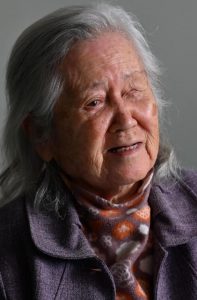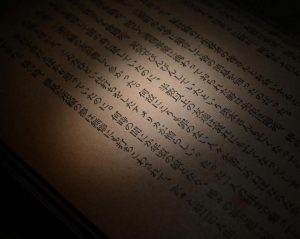Striving to fill voids in Hiroshima, unfinished judgment, Part 4: Atomic Bomb Survivors Association
Apr. 25, 2024
Full support for lawsuit based on rage at U.S.
In March 1953, eight years after the atomic bombing, Shoichi Okamoto, an attorney in Osaka, visited Hiroshima City to convey his idea of a lawsuit to claim compensation for damages caused by the atomic bombings. The Atomic Bomb Survivors Association, with a membership of around 300 people, had been formed in Hiroshima the previous year.
With hope to raise public awareness
Those listening to Mr. Okamoto’s explanation were Takeshi Kawate, the association’s secretariat, who passed away in 1960 at the age of 29, and some of his colleagues. Seeing it as a way to raise public awareness regarding a prohibition on nuclear weapons, they welcomed the idea of the lawsuit, which accused the United States of violating international law when it dropped the atomic bombs and sought compensation from that country. The organization’s newsletter widely communicated their full support of the lawsuit.
Published in 1953, Genbaku ni Ikite (in English, ‘Surviving the A-bombing’), a collection of personal accounts written by association members about their experiences in the atomic bombing, clearly stated that the root of their support was anger toward the United States. One of the writers, Kayoko Maki, had suffered severe facial injuries and lost her left eye in the atomic bombing while at a telephone company in the center of the city, where she had been mobilized for work as a school student. Her sister, teachers, and friends were killed in the bombing.
“Why did innocent people have to suffer so much? Regardless of whether it was war, I hate America for how badly it treated us,” wrote Ms. Maki in the publication.
The name “Maki” was actually the pen name for Taeko Teramae, 93, a resident of Asaminami Ward who experienced the A-bombing at age 15. “I was embarrassed to reveal my true name,” she recounted. “I still look in the mirror every morning and think, ‘It’s because of America that I am like this.’”
Distracting herself from loneliness
In the collection, she wrote, “When I walk down the street wearing glasses, some people say unpleasant things or look at me curiously.” That was a time when there was still no government support available for A-bomb survivors. During those difficult days, she learned about the Atomic Bomb Survivors Association. When she spoke with members about what was on her mind, she was distracted from her loneliness.
Mr. Kawate, who was the contact for Mr. Okamoto with respect to the lawsuit, was close to Ms. Teramae. She said of him, “He was kind and reassuring to those who had been injured in the A-bombing.” Mr. Kawate was also involved in editing the collection of personal accounts and contributed his own writing to the publication. He wrote his thinking that the lawsuit was “to prevent such ravages of war from being repeated.”
In January 1954, in preparation for the lawsuit, Mr. Okamoto and members of the association formed an alliance seeking compensation for A-bomb damages. The group worked to establish the direction they wanted to take their demands. The lawsuit was to target the U.S. government and President Harry Truman and members of his administration at the time of the atomic bombings. The alliance filed the lawsuit in a U.S. court of law, seeking financial compensation based on the extent of injuries from the bombings and the number of victims.
Mr. Okamoto, the representative of the initiators of the lawsuit, said in an interview that appeared in the Chugoku Shimbun on January 9, 1954, “I am confident that any conscientious judge in the U.S. would support our lawsuit.” He believed in the American legal system’s sense of justice.
However, the Japanese government’s perception was different. Behind the scenes, it began to keep a close eye on Mr. Okamoto and the association’s activities.
Keywords
The Atomic Bomb Survivors Association
The Atomic Bomb Survivors Association was an early A-bomb survivor organization formed in Hiroshima in August 1952, prior to establishment of the Hiroshima Prefectural Confederation of A-bomb Sufferers Organizations in May 1956. The group’s aim was to unite A-bomb survivors to promote medical treatment, activities aimed at demanding support in daily life, and the peace movement. At its inception, the association had five executive members, including Kiyoshi Kikkawa, an A-bomb survivor who had revealed to the public the keloid scars on his back to call out the cruelty of the atomic bombing, and Sankichi Toge, an A-bomb survivor and poet.
(Originally published on April 25, 2024)









